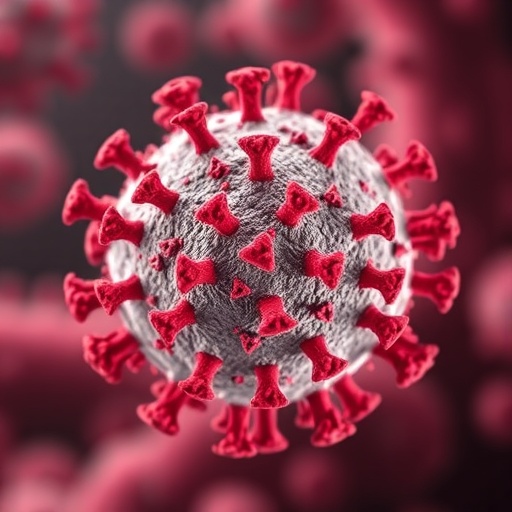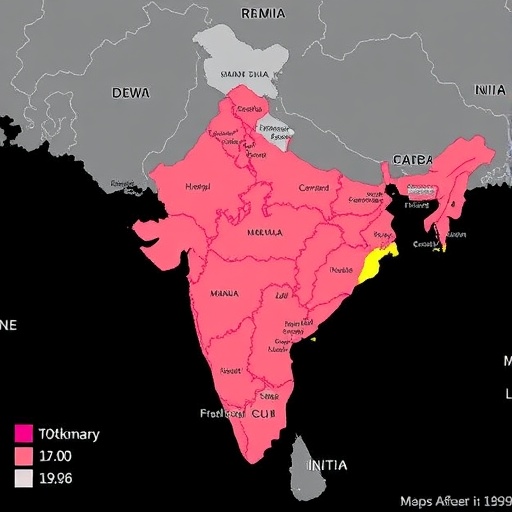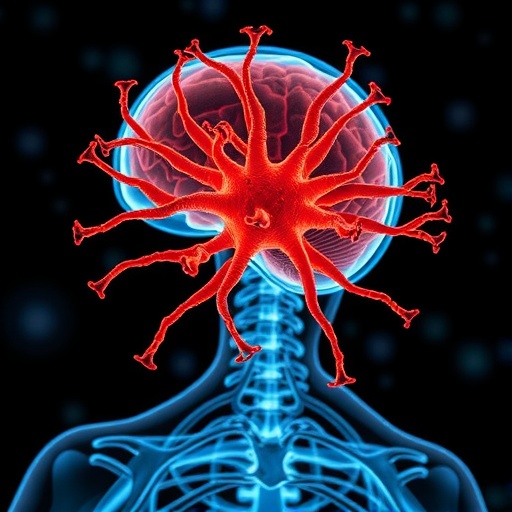PROTECT YOUR DNA WITH QUANTUM TECHNOLOGY
Orgo-Life the new way to the future Advertising by AdpathwayIn a groundbreaking advancement in quantum sensing technology, researchers have achieved unprecedented signal amplification in solid-state sensors by leveraging asymmetric many-body echo dynamics. Utilizing nitrogen-vacancy (NV) centers in diamond, this study presents a novel approach to enhance sensitivity beyond conventional limits, opening avenues for high-precision measurements in various fields ranging from material science to biology. The experimental platform is based on a meticulously engineered diamond sample with a thin δ-doped layer, where NV center densities are precisely controlled through a rigorous growth and postprocessing procedure.
The diamond samples were prepared using plasma-enhanced chemical vapor deposition (PECVD), creating an isotopically purified 12C epilayer with a thickness of approximately 420 nanometers. During growth, a δ-doping technique was employed to introduce a nitrogen layer just 8 to 10 nanometers wide. This ultra-thin doped layer serves as the active sensing region, minimizing spin decoherence while maximizing interaction among the NV centers. Post-growth treatments involved electron irradiation under a transmission electron microscope to generate vacancies, which subsequently diffuse and bind with nitrogen atoms during a high-temperature annealing step, forming NV centers with high fidelity and density.
To ensure the optimal charge state stability of the NV centers, the samples underwent a series of chemical cleaning and surface oxidation protocols. A triacid boiling step, followed by annealing in air at elevated temperatures, provides oxygen termination of the diamond surface, which stabilizes the negatively charged NV− state essential for qubit operations. Characterization techniques, including secondary ion mass spectrometry and spin coherence measurements, verified the controlled dopant profiles and spin environments. Importantly, the areal density of NV− centers was experimentally estimated to be around 76 ppm·nm across all four crystallographic orientations, while substitutional nitrogen impurities were kept to an upper bound of 230 ppm·nm, ensuring a delicate balance between interaction strength and decoherence sources.
The experimental setup integrates a bespoke voltage-controlled current source capable of delivering precisely timed and shaped currents to generate a pulsed magnetic field. This field is essential for manipulating the quantization axis of the NV centers, enabling the creation of tailored Hamiltonians that realize complex many-body dynamics such as the two-axis twisting (TAT) interactions. The device architecture incorporates a sapphire substrate for enhanced thermal management, critical for handling the heat dissipation associated with the high currents used (up to 1 A) and maintaining device integrity during repeated measurement cycles.
Crucially, the team engineered microwave and current pulse sequences to exploit Floquet engineering techniques, wherein rapid periodic driving modulates the system Hamiltonian to generate effective interactions that are otherwise challenging to realize. By carefully tuning π-pulse durations and inter-pulse delays, they sculpted the spin dynamics to implement asymmetric many-body echoes that amplify the desired signals while suppressing deleterious noise from disorder and environmental fluctuations. This approach benefits from the relatively slow qubit frequency (712.24 MHz) in comparison to the pulse rise and fall times, allowing adiabatic switching regimes to avoid losses in spin polarization.
Systematic errors inherent to such complex quantum control experiments were meticulously addressed. The researchers implemented differential fluorescence readouts to mitigate drifts in laser intensity and photon detection efficiency, alongside active stabilization of qubit frequencies and Rabi driving strength. Furthermore, they accounted for global Bloch sphere rotations induced by pulse imperfections by averaging measurements over antipodal state pairs, effectively canceling spurious coherent rotations. Microwave pulse shaping was refined through pre-distortion methods informed by vector network analyzer measurements, ensuring high-fidelity control pulse delivery and minimizing cross-talk effects that could obscure the amplification signal.
Numerical simulations played an indispensable role in both experiment design and data interpretation. Employing the cluster discrete truncated Wigner approximation (cluster-DTWA), the team modeled the spin ensemble dynamics incorporating a suite of realistic imperfections—the finite thickness of the NV layer, static and dynamic on-site disorder, and incomplete spin polarization—all substantiated by independent experimental characterizations. These simulations, performed on ensembles of approximately 200 spins, validated the observed amplification effects and provided insight into the interplay of coherent interactions and decoherence in such strongly disordered many-body systems.
The achieved amplification is evidenced by a marked enhancement of the measurement contrast, exceeding a fourfold improvement over protocols lacking many-body echo engineering. This demonstration of signal amplification harnessing intrinsic spin-spin interactions represents a significant conceptual departure from traditional single-spin sensing methods, which are often constrained by limited signal-to-noise ratios and environmental noise. By effectively using the NV ensemble as a quantum amplifier, the study paves the way for ultra-sensitive magnetometry and electric field sensing with nanoscale spatial resolution.
Beyond advancing quantum metrology, the asymmetric many-body echo technique detailed here opens promising directions for exploring exotic quantum phases and nonequilibrium dynamics within solid-state spin systems. The ability to selectively amplify specific collective modes while suppressing decoherence offers a powerful toolkit for quantum simulation and information processing. The fidelity of the engineered Hamiltonians and the system’s robustness against external perturbations underscore the maturity and versatility of driven-dissipative NV center platforms.
The interplay between Floquet driving, disorder, and strong spin interactions also sheds light on fundamental questions of many-body localization and thermalization in quantum systems. By controlling spin-spin interactions dynamically, the experiment exemplifies how engineered dissipation and tailored pulse sequences can stabilize coherent many-body states over extended timescales, bypassing limitations set by static disorder and environmental noise. This insight enriches the broader quest for fault-tolerant quantum technologies.
In summary, this research eloquently illustrates how precision material engineering, sophisticated pulse design, and theoretical modeling converge to transcend conventional boundaries in solid-state quantum sensing. The exploitation of asymmetric many-body echoes to amplify signals in NV center ensembles not only boosts sensitivity but also deepens our understanding of driven quantum materials. These tools promise to unlock novel applications in diverse areas including condensed matter physics, fundamental quantum science, and next-generation sensing technologies, heralding a new era of quantum-enhanced measurement beyond the classical frontier.
Subject of Research: Quantum sensing and signal amplification using NV centers in diamond
Article Title: Signal amplification in a solid-state sensor through asymmetric many-body echo
Article References:
Gao, H., Martin, L.S., Hughes, L.B. et al. Signal amplification in a solid-state sensor through asymmetric many-body echo. Nature 646, 68–73 (2025). https://doi.org/10.1038/s41586-025-09452-7
DOI: https://doi.org/10.1038/s41586-025-09452-7
Tags: advanced diamond sensor fabrication techniquesasymmetric many-body echo dynamicschemical cleaning for charge state stabilityelectron irradiation for NV center formationhigh-precision measurements in material scienceisotopically purified 12C epilayerminimizing spin decoherence in sensorsnitrogen-vacancy centers in diamondplasma-enhanced chemical vapor depositionquantum sensing technologysignal amplification in solid-state sensorsδ-doping technique in diamond


 2 hours ago
9
2 hours ago
9





















 English (US) ·
English (US) ·  French (CA) ·
French (CA) ·